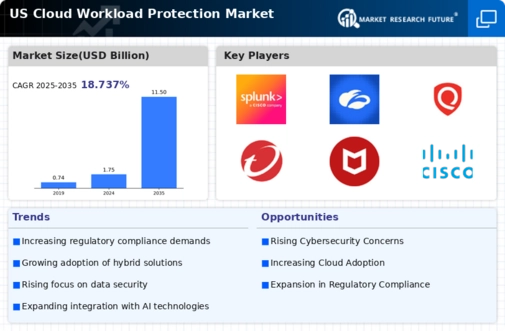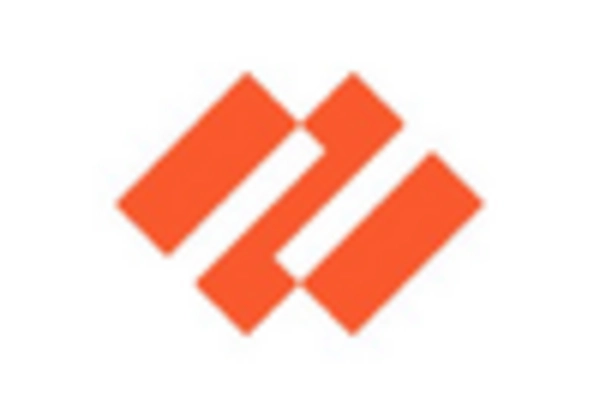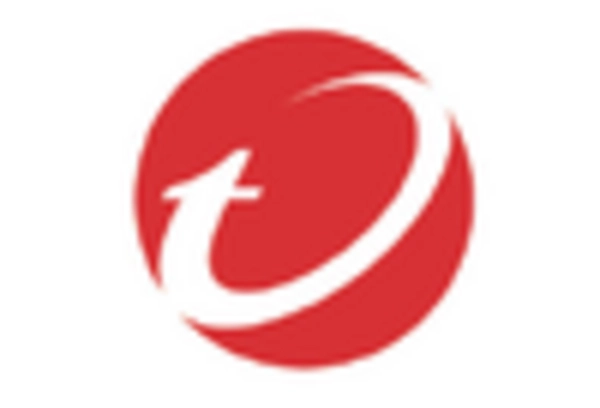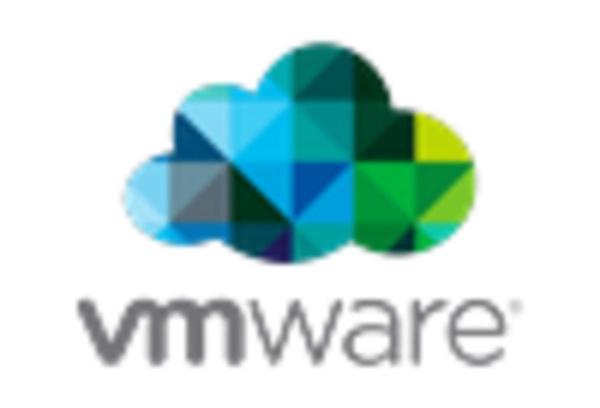The cloud workload-protection market is currently characterized by intense competition and rapid innovation, driven by the increasing demand for secure cloud environments. Major players such as Palo Alto Networks (US), Microsoft (US), and Amazon (US) are at the forefront, each adopting distinct strategies to enhance their market positions. Palo Alto Networks (US) emphasizes innovation through continuous development of advanced security solutions, while Microsoft (US) focuses on integrating its cloud services with robust security features, thereby appealing to enterprise clients. Amazon (US), leveraging its extensive cloud infrastructure, aims to provide comprehensive security solutions that are seamlessly integrated with its existing services. Collectively, these strategies contribute to a dynamic competitive landscape, where differentiation is increasingly based on technological advancements and customer-centric solutions.
In terms of business tactics, companies are localizing their operations and optimizing supply chains to enhance service delivery and responsiveness. The market structure appears moderately fragmented, with a mix of established players and emerging startups. This fragmentation allows for diverse offerings, yet the influence of key players remains substantial, as they set benchmarks for innovation and service quality.
In October 2025, Palo Alto Networks (US) announced a strategic partnership with a leading AI firm to enhance its threat detection capabilities. This collaboration is likely to bolster its position in the market by integrating AI-driven insights into its security solutions, thereby improving response times and accuracy in threat identification. Such advancements may provide a competitive edge, particularly as organizations increasingly seek proactive security measures.
In September 2025, Microsoft (US) launched a new suite of cloud security tools designed specifically for hybrid environments. This initiative reflects a strategic pivot towards addressing the complexities of modern IT infrastructures, where businesses operate across multiple platforms. By offering tailored solutions, Microsoft (US) aims to capture a larger share of the market, appealing to organizations that require flexible and robust security measures.
In August 2025, Amazon (US) expanded its cloud workload-protection services by introducing enhanced encryption features for its cloud offerings. This move is indicative of Amazon's commitment to maintaining a competitive edge through continuous improvement of its security protocols. By prioritizing data protection, Amazon (US) not only addresses customer concerns but also positions itself as a leader in secure cloud solutions.
As of November 2025, the competitive trends in the cloud workload-protection market are increasingly shaped by digitalization, sustainability, and the integration of AI technologies. Strategic alliances are becoming more prevalent, as companies recognize the value of collaboration in enhancing their service offerings. Looking ahead, competitive differentiation is likely to evolve, shifting from price-based competition to a focus on innovation, technological advancements, and supply chain reliability. This transition underscores the importance of agility and responsiveness in meeting the evolving needs of customers.
















